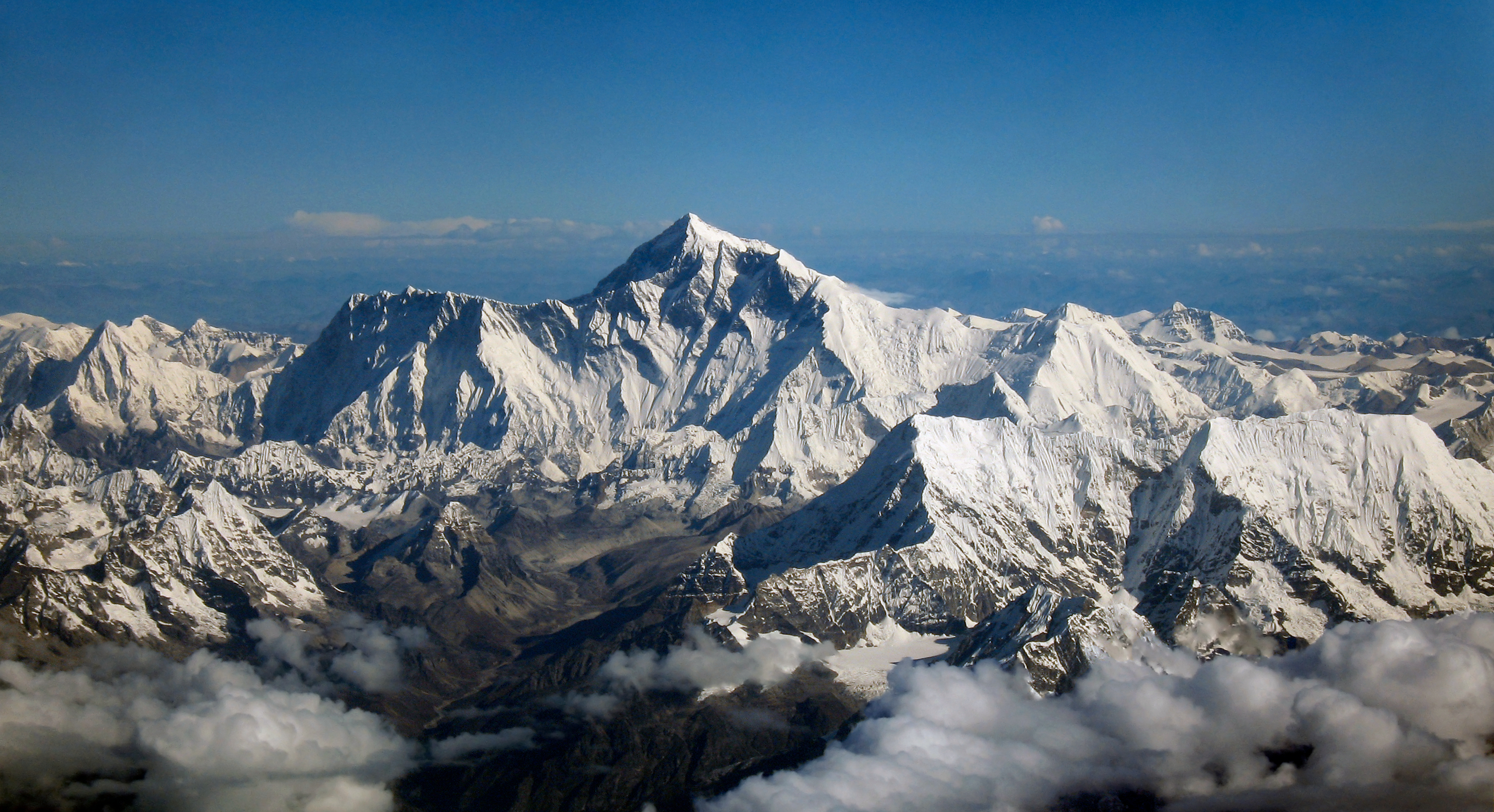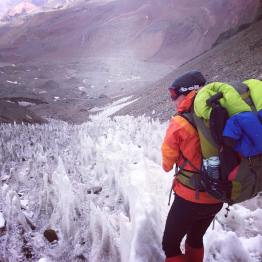Indicative Aconcagua Itinerary From Canada Return
Day 1: Afternoon departure from North America for arrival in Mendoza, Argentina the following day at mid-day, not evening. Preferred airlines are Air Canada or American connecting with Lan Chile through Santiago, Chile.
Day 2: Arrival in Mendoza. Mid-day arrival allows an additional flight that day for missing baggage to arrive. Accommodation at Hotel Nutibara (double occupancy) and dinner that evening. Catch up on sleep.
Day 3: A buffer day to allow for any clients that arrive late and or baggage. Secure climbing permits (1 to 3-hour process). Procure fresh food for the 4-day approach to base camp. Group dinner, gear packed for mules and personal packs for the trek in. Last night (and hot shower!) in Mendoza.
Day 4: Morning departure for Punta Vacas (3-hour drive). On arrival, permits are stamped by park rangers, and gear turned over for mules. The group begins the trek into Pampa Lenas (5 hours). Everyone carries a personal pack with food, water, trekking poles, and clothing. It will be windy, probably hot, possibly rainy or even snowing, so you must carry fleece and Goretex. We meet the mules at Pampa Lenas, set up tents, and each tent group prepares dinner.
Day 5: Up at dawn, prepare breakfast (tent groups), organize personal gear for the day, pack up tents and pack bags for the mules. Depart for 5 to 6-hour trek to next campsite (Casa Piedra). This will be on sandy rocky terrain following the Vacas valley, a huge floodplain. Just before arrival, you will have your first view of Aconcagua! At the campsite, we follow the same schedule as the previous day.
Day 6: Schedule as the previous day but include sandals for river crossings. This will be a short day as we set up camp at mid-day to done to allow for a gentle acclimatization process. The trek is up a steep gorge in the Relenchos valley. Minimal camping gear will be left at the campsite by the mules with the rest being taken into base camp that day. Our camping gear for that night we carry into base camp ourselves the following day. After lunch, we rest for the afternoon then ascend a small peak before dinner.
Day 7: Relaxed morning in the campsite with dramatic views of Aconcagua. Pack up our gear and depart by mid-morning. The trek is about 3 hours on gentle terrain, although it sometimes takes longer as we stop often to enjoy the views. Arrive base camp (Plaza Argentinas 13,800 ft) by mid-afternoon. Set up camp, relax, have dinner. The objective of this gentle approach is to arrive in base camp without headaches.
Day 8: Pack a summit pack with your crampons and a 3-day food pack along with your food, clothing and water for the day. Depart mid-morning for a slow climb (3 to 4 hours) to camp 1 at 16,200 ft. Deposit gear at campsite and return to base camp.
Day 9: Organize our packs to make a moderate carry (10 to 15 kg) to camp 1. After arrival prepare campsite for occupation the following day. This involveslevelingg out the tent areas, collecting rocks to anchor the tents, securing the equipment we will leave there and possibly setting up 1 tent. Return to base camp.
Day 10: Move up to camp 1. This will be a hard day as the packs will be heavy. Upon arrival set up tents and rest for the remainder of the day.
Day 11: Very light carry to camp 2 at 19,200 ft. Again only crampons and a food bag. Deposit at the campsite and return to camp 1. The descent back takes about an hour.
Day 12: Moderate carry to camp 2 (10 to 15 kg). Prepare campsite for occupation and return to camp 1. Please be advised we are now operating at an elevation where weather can change rapidly, you must carry appropriate clothing at all times, ie. fleece pants, jacket, hat, gloves, Goretex outwear, mitts, down vest or sweater. In addition to your water, you will also carry a ½ litre thermos of hot fluid; your water bottles must be in insulated carriers so they can be filled with hot fluid. When in doubt simply copy what the guides are wearing and carrying!
Day 13: This will be a rest day where you can clean up, relax, read, recuperate and remotivate yourself for the days to follow. Alternatively, this rest day could be used earlier in base camp but taking it at camp 1 allows for greater acclimatization.
Day 14: Move up to camp 2. This will be a long hard day for everybody, possibly the hardest day of the trip. Tents must be taken down and set up again at camp 2, snow collected for melt water, and dinner prepared. It may sound simple but will be demanding. Clients must be able to complete their carries on days 12 and 14 in order to be cleared for a summit bid. We have found that those individuals that cannot do these 2 carries will have difficulty on summit day, which will necessitate them being brought down with a guide. Turn around time on summit day is 2:30 pm. We must be on the summit by then or we will turn back. No exceptions.
Day 15: This will be a rest day at camp 2 allowing time to rehydrate, eat, relax and ready yourself for the first summit attempt the next day. Water bottles and thermos must be filled, summit packs organized and ready, dinner should be completed and everyone ready for sleep by 6:00 pm. Tt might be necessary to use a sleeping pill so you are rested for the next day.
Day 16: Summit day. If the weather is appropriate, up at 3:30 am, breakfast and on our way by 4:30 am. It will be cold and probably windy, perhaps as cold as -30 C. We will all be wearing headlamps and crampons. We allow 10 hours for the ascent and 4 hours for the descent back to camp 2 where we will spend the night. It could take less time but we plan for 14 hours round trip. You will need at least 2 ½ litres of hot fluid and lots of snack food, though most people will have poor appetite by this stage. This will be a hard day.
Day 17: This will be our second possible summit day should weather have prevented an attempt on day 16.
Day 18: Pack up camp 2 and descend to camp 1 where we pick up any gear or garbage left there, then continue the descent to base camp. The selection of clothing and equipment you carried above base camp is very important so that you take only that which is needed, you will be carrying down everything you brought up (garbage included) and you will be doing this in one load. When in doubt just copy the guide. After arrival in base camp, we organize our equipment for departure the next day.
Day 19: 7:00am departure from base camp with light packs for an 8 to 9-hour trek to Pampa Lenas. Camp in the open under the stars for our last night.
Day 20: 8:00am departure for the 4-hour trek to our pickup at Punta Vacas. Return to Mendoza by late afternoon and check in at Hotel Nutibara, cleanup and relax before heading out for dinner… perhaps even some wine.



Day 21: A day to relax and enjoy Mendoza. Flights should be booked for an evening departure so you will have a full day. Arrivals back in North America are early morning the following day. Clients are welcome to book their flights for an earlier arrival in Mendoza or a later departure. It is a beautiful city and the weather is usually hot and dry. Hotel and personal expenses will be your responsibility.
This is a physically demanding trip. You will need to get fit before your departure. The optional 4-day Rockies trip is recommended as it gives us an opportunity to assess your ability. Should you find these 4 days too difficult please understand that the Aconcagua climb will be more challenging.
We look forward to being of service.









